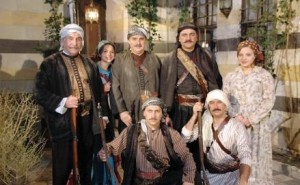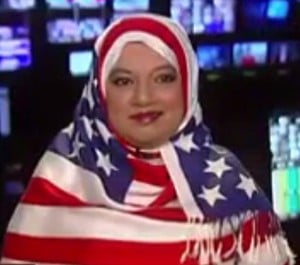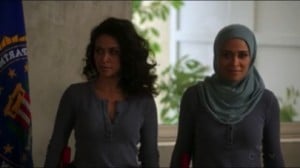Every year, the holy month of Ramadan brings lots of spiritual moments, as well as hours of continuous entertainment in the form of shows and soap operas. Every Ramadan, I pick a number of soap operas to watch and write about. This year, there was a large number of television series that discussed issues faced by women in Arab societies. Some issues included women in prisons, such as Egyptian series Sijn Al Nesa, and women in wars and revolution, such as Syrian series Halawet Al Rouh.

On the other hand, there were other series that couldn’t seem to get enough of images of women as followers of their male counterparts. One good example is Syrian soap opera Bab Al Hara, which came this year in its sixth season. A lot has been written about Bab Al Hara in terms of its weak script, lost plot, over-acting, and chaotic representation of real events happening in Syria. In addition to all that, the show sticks to very traditional images of women, making them look like broken, lost, indecisive housewives.
If you never heard about Bab Al Hara, here is what it is. It’s a Syrian series that was started about 12 years ago, in 2006. At that time, it was a renewed approach to bringing back an idealized past of Syrian communities, where everything was supposedly simple. Men represented the strong side of their communities, while women were the beauties and the supporters of their men.
Building on the success of the first season, the production company decided to make another season, this time introducing new characters. One of them was a Christian woman who was supporting the revolutionaries at that time. The character of Em Joseph, the Christian lady, received lots of praise, because of her unprecedented approach to changing the traditional image of women in such soap operas.
In later seasons, Em Joseph disappeared, and the female roles in the series went back to its traditional approach until the year 2011. During that year, the Syrian uprising began, and people working in the drama business found themselves forced to talk about the revolution. That included the team of Bab Al Hara.
The Syrian regime and security forces have been known for several decades for their brutal treatment of civilians, especially the opposition. Given that reputation, it was not easy for most of the people to stand up against the regime and ask for freedom; otherwise, the consequence of that would be disappearing forever in the dark cells of the intelligence, or the Mokhabarat. For the team of Bab Al Hara, nothing has changed in the story or the plot. Members of the Syrian series likely feared talking about any issue related to the uprising, because the consequences are known to them: shutting down the shooting locations, or imprisoning members of the team, especially if the shooting locations are inside Syria.
In other words, the events in the show were no reflection of what was happening in reality as the uprising began. Syrians were facing death on daily basis, while characters in Bab Al Hara were busy dealing with daily events such as should a man marry three or four women, and should he divorce his wife after she was talking in a bad way to his mother. The audience at that time, including myself, felt naïve, for watching such “silly” events. It was unfair to the images of people dying every day for their freedom to be accompanied at the same time with images of men busy with unnecessary details (or was it a way of making us forget about freedom fighters, and focus on such images instead?)
This year, season six was shown on television, and nothing seems to have changed. Women are still the followers of their fathers, brothers, husbands, even sometimes their neighbors. Their opinions are not heard, and even if they are allowed to express their opinions, the opinions are not important. The series conveys a number of outdated ideas: the man taking decisions on behalf of his family, as if the other members don’t exist, and women having no choice but to obey what they are told, and stay home to finish the house chores.
It’s sad to witness such representation of women in our age. Syrian history has given us great examples of women who fought with men in the front line. In his book The Resistance of People and A History of Existence, Syrian historian Jamil Elwani writes:
“We should only be very proud of all Syria women who fought the colonial enemy at all levels. There were women who were part of the revolution in Damascus, Hama, and Aleppo. Some died in battles, others died in strikes, such as the one held in 1936, and we remember very well the death of Ra’eefa Bint Haj Khalil Al Tahhan in Hama.”
There are women in Syria to this day who are calling for freedom, and fighting for it. It does not have to be through carrying weapons of guns. It could be with a word, an opinion piece, or participating in a protest.
The other day, I was browsing through my Facebook timeline, and I found a video of this very brave lady challenging all enemies if Syria. She inspired me to write this piece, and will always give me hope that women can make the change societies need. She is called “The Woman in Pants.” This brave woman used to go out every day holding a sign in the middle of Al Riqqa, a Syrian city, and calling members of the Islamic State of Iraq and Levant to leave town. People around her were too scared to salute her for what she is doing, fearing they might be seen by the ISIL militants. In pants, she used to express her thoughts and opinion with no fear. Watching such women in real life standing against injustice creates examples for producers of television dramas to follow. These women are the inspiration we need in our lives, in order to show that wars and battles for freedom are not only fought by men, but there are also women standing hand in hand with them.













